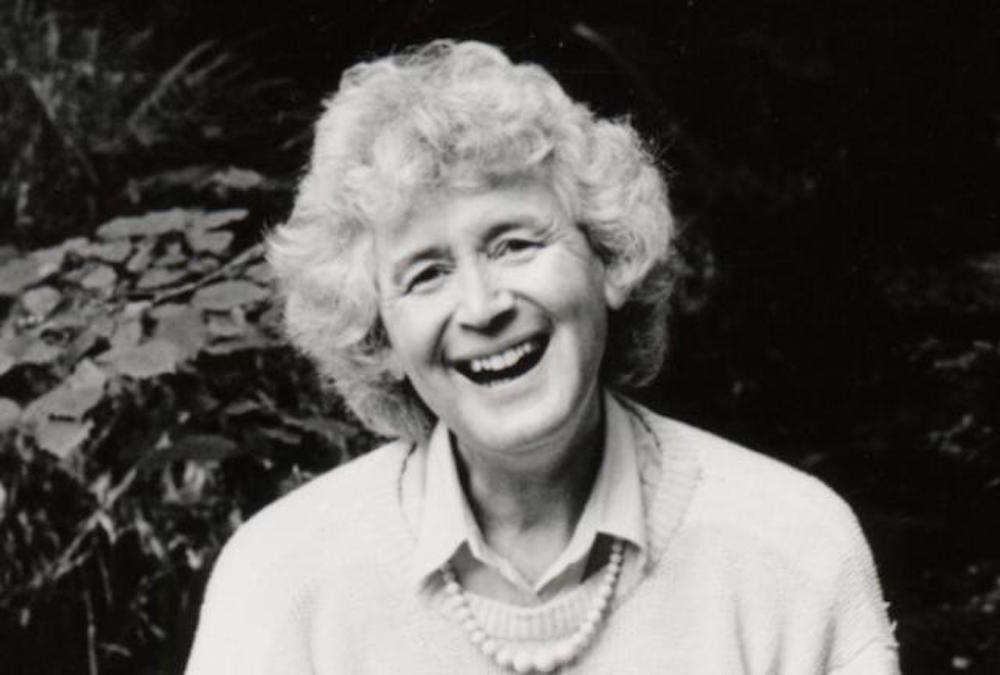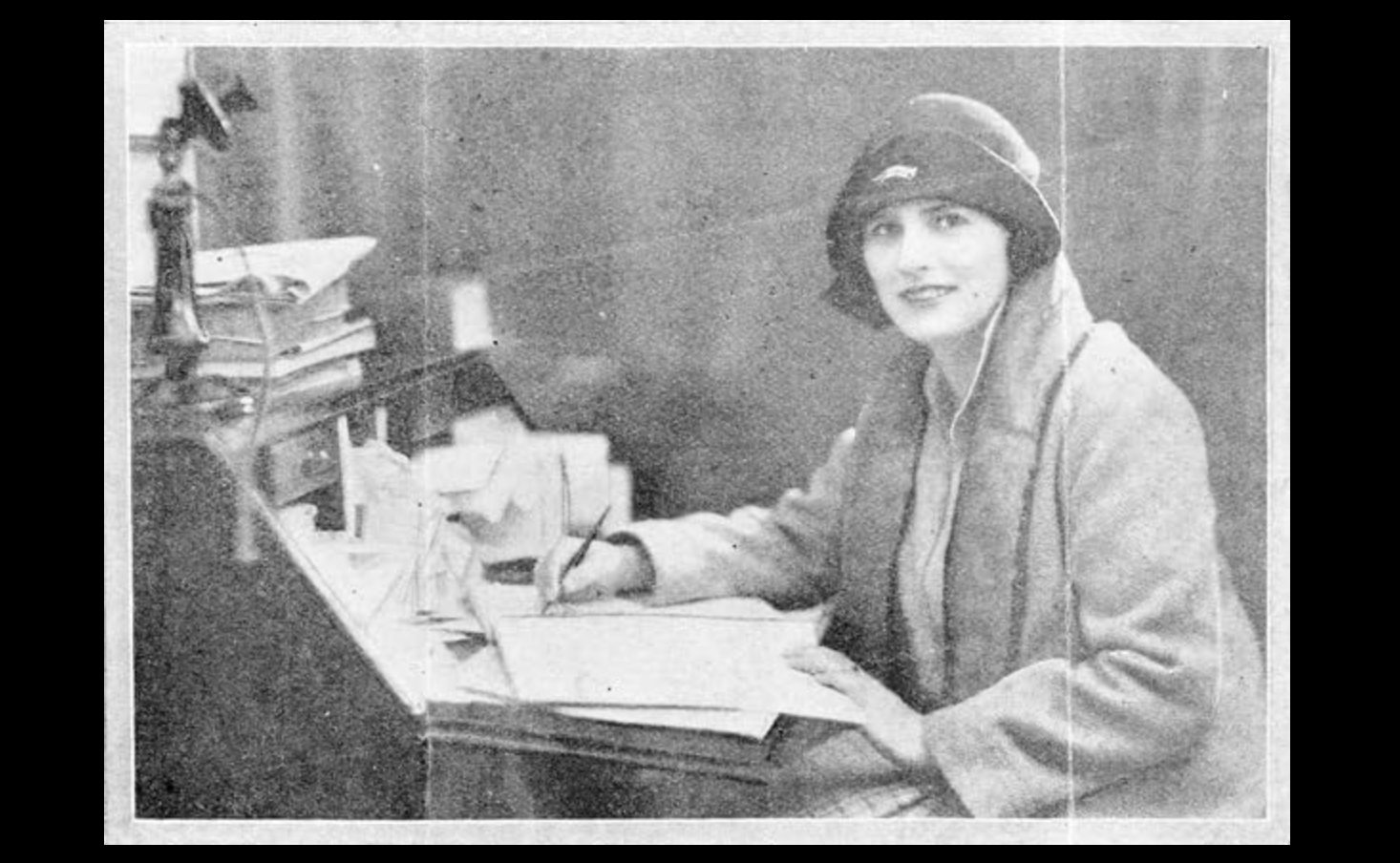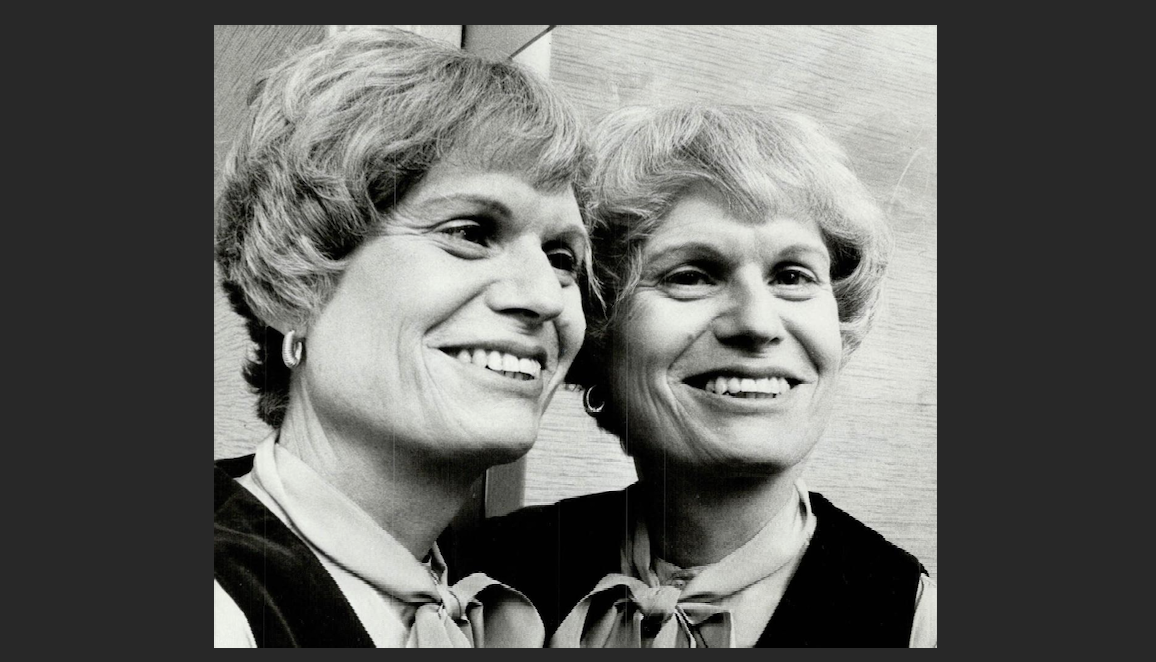Transgender
Trans Typologies: A Brief History
In a new book, MIT philosopher Alex Byrne tracks our evolving understanding of gender dysphoria.

Ever since I could form coherent thoughts, I knew I was a girl trapped inside a boy’s body.
— Jazz Jennings, Being Jazz
I was three perhaps four years old when I realized that I had been born in the wrong body, and should really be a girl.
— Jan Morris, Conundrum
The Welsh writer James Morris (1926-2020) was born in the West Country of England and educated at Lancing College, a privately operated school whose alumni include the novelist Evelyn Waugh and Nana Akufo-Addo, who is currently the President of Ghana. Morris went on to study English at Oxford University, and became a renowned globe-trotting journalist, “the Flaubert of the jet age” in the words of Alistair Cooke. While working for the London Times, he joined the ninth British Expedition to Mount Everest in 1953, reporting from 22,000 feet up on the first successful ascent, by the New Zealander Edmund Hillary and the Nepalese-Indian Tenzing Norgay. James married one Elizabeth Tuckniss, whose father was a tea planter in (what is now) Sri Lanka, and the couple had five children.

In 1972, James—now Jan—travelled to Casablanca for sex reassignment surgery. Two years later, Jan published a best-selling memoir, Conundrum, about the most spectacular journey of her life. She described her transition in mystical terms: “I never did think my own conundrum was a matter either of science or of social convention. I thought it was a matter of the spirit, a kind of divine allegory, and that explanations of it were not very important anyway.” Morris contrasted herself with cross-dressers and gay men, who were more earthly beings:
Both transvestites and homosexuals sometimes suppose they would be happier if they could change their sex, but they are generally mistaken. The transvestite gains his gratification specifically from wearing the clothes of the opposite sex, and would sacrifice his pleasures by joining that sex: the homosexual, by definition, prefers to make love with others of his own sort, and would only alienate himself and them by changing. Trans-sexualism is something different in kind. It is not a sexual mode or preference. It is not an act of sex at all. It is a passionate, lifelong, ineradicable conviction, and no true trans-sexual has ever been disabused of it.

Transitioning is an ordeal, socially and professionally—to say nothing of the pain and expense. Morris took it all in stride, at one point taking advantage of his/her chameleonic condition in the London scene of private gentlemen and gentlewomen’s clubs:
At the Travellers’ Club, for example, I was obviously known as a man of sorts—women were only allowed on the premises at all during a few hours of the day, and even then were hidden away as far as possible in lesser rooms or alcoves. But I had another club, only a few hundred yards away, where I was known only as a woman, and often I went directly from one to the other, imperceptibly changing roles on the way—‘Cheerio, sir,’ the porter would say at one club, and ‘Hullo, madam’ the porter would greet me at the other.

Dame Rebecca West was, like Jan Morris, a much-lauded journalist and travel writer. Her life was perhaps even more remarkable than Morris’: she was a suffragette, H.G. Wells’ mistress, and the author of Black Lamb and Grey Falcon, a masterpiece about the former Yugoslavia. Like Morris, West was awarded the CBE (Commander of the Most Excellent Order of the British Empire). She reviewed Conundrum for the New York Times in April, 1974, shortly after it was published. Jan Morris was no Jazz Jennings, as West in effect noted: “He liked being a schoolboy,” West wrote. “He liked being an undergraduate, a soldier, a writer, a husband and father; and he was that happy, happy man who does the things Walter Mitty wanted to do.”
West was unconvinced by Jan’s metamorphosis:
She sounds not like a woman, but like a man’s idea of a woman, and curiously enough, the idea of a man not nearly so intelligent as James Morris used to be…when Miss Morris writes of the result of her hormonic treatment, ‘my small breasts blossomed like blushes,’ one feels sure she is not a woman. Almost any woman not feeble-minded would know that is a remark one must leave for other people to make.
The spectacle of a member of the British Establishment disputing, in the pages of the Gray Lady, whether one of her distinguished peers is in fact a woman, must be savoured and preserved for future generations. It will never happen again.
Feminist philosophers write a lot about men’s oppression of women. One might have expected them to take Rebecca West’s side; or at the very least to wonder why a married father of five, by now well into his 40s, should want so desperately to become a woman. The question is less urgent when applied to those travelling in the other direction: why wouldn’t women want to move out of the oppressed class, if they could? The transformation of ultra-feminine Jaron Jennings into Jazz is also comprehensible, especially since femininity in boys is disfavoured. But why would an exceptionally successful man such as Morris endure gruelling surgery, only to emerge lower in the social hierarchy, under the heel of the patriarchy?

On questions like these, my fellow academic philosophers are remarkably incurious. In the contemporary mainstream literature, trans women are regarded as visitors from distant lands, bearers of great wisdom, and generally to be deferred to on matters of gender. Asking awkward questions about their life stories is considered rude.
Which, of course, it often is. However, academic disciplines are not supposed to trade understanding for decorum. In pursuit of understanding, then, let’s turn to another example.
Ridgley Hunt was born one year later than James Morris, in New York. Like Morris, he studied English at a world-class university (Yale). Like Morris, he served in the Second World War, Morris with the 9th Queen’s Royal Lancers and Hunt as an infantryman in the U.S. Army, rising to the rank of sergeant. Like Morris, Hunt was a globe-trotting journalist and a brilliant writer; he worked for the Chicago Tribune and travelled to Saigon in 1968 as the paper’s combat correspondent, accompanying patrols and flying in helicopters with the First Air Cavalry, many times under fire from the North Vietnamese. Like Morris, Hunt was married with children—three, from his first marriage. He had an affair with a younger employee at the Tribune, divorced, and married his family’s babysitter.
And, like Morris, Hunt met in the 1970s with the legendary German-American endocrinologist and sexologist Harry Benjamin in New York City, in pursuit of sex reassignment.

Hunt was greatly affected by Morris’s Conundrum, and was struck by their parallel lives. As James became Jan with the help of hormones and surgery, Ridgley became Nancy, and then wrote an autobiography, Mirror Image, in 1978. Nancy was more forthcoming than Jan about the forces that propelled her across the gender line. Describing her time as a boy at Pomfret, a Connecticut prep school for the New England elite, she wrote:
Occasionally I even dated girls myself and always I was feverishly interested in them. I studied their hair, their clothes, their figures. And I brooded about the increasing differences between us. I seethed with envy while at the same time becoming sexually aroused—I wanted to possess them even as I wanted to become them. In my night-time fantasies, as I masturbated or floated toward sleep, I combined the two compulsions, dreaming of sex but with myself as the girl, my partner blanked out because I so loathed the male body, even my own.
Like Jan, Nancy was no Jazz.
Both Jan Morris and Nancy Hunt thought of themselves as “true transsexuals,” disparaging gay men and mere cross-dressers who also desired a change of sex. By the 1970s, clinicians largely agreed that transsexuality in natal males came in different varieties, although they disagreed both on what those varieties were, and on issues of terminology.
For example, in 1974, the psychoanalysts Ethel Person and Lionel Ovesey distinguished “primary” from “secondary” transsexuals. Among the first group, “the transsexual impulse is insistent and progressive, and usually they cannot rest until they reach their objective.” They subdivided the other, secondary, group into “effeminate homosexuals and transvestites,” who “become transsexuals under stress.” Being psychoanalysts, they formulated an elaborate Freudian theory—now consigned to the dustbin of history—by which primary transsexuals supposedly developed a “fantasy of symbiotic fusion with the mother to counter separation anxiety.”

The psychiatrist Robert Stoller made a similar distinction, between “true transsexuals,” transvestites, and homosexuals. “True transsexuals,” Stoller claimed in 1975, are never sexually aroused by cross-dressing (unlike transvestites), and are “feminine, not effeminate.” “They do not work in masculine professions” and are “incapable of sexual relations with the opposite sex”—so Jan Morris and Nancy Hunt would not qualify. Stoller drew the dividing line between true transsexuals and cross-dressing homosexuals at the penis: “The transsexual has no interest in his own penis,” unlike the homosexual.
Later, Stoller borrowed Person and Ovesey’s terminology, equating “primary” transsexuals with “true” transsexuals, and conceiving “secondary” transsexuals as comprising “a wastebasket category”—a miscellany of “men requesting ‘sex change’” who were not primary transsexuals.
Johns Hopkins University sexologist John Money dispensed with the primary transsexual category altogether, and divided male transsexuals into two groups, “effeminate-homosexual” and “transvestitic.” Other researchers distinguished “fetishistic” transsexuals, who had a history of sexual arousal from cross-dressing, from “nuclear” transsexuals, who did not.
The diagnosis of Transsexualism—“persistent discomfort and sense of inappropriateness about one’s assigned sex”—appeared in the third edition of the Diagnostic and Statistical Manual (1980). The DSM-III subdivided the diagnosis into three types, based on sexual orientation: asexual (corresponding to Person and Ovesey’s primary transsexuals), homosexual, and heterosexual. The pathway that would eventually be taken by Jazz Jennings was visible in the criteria for “Gender Identity Disorder of Childhood”—in boys, “a profound disturbance of the normal sense of maleness…preoccupied with female stereotypical activities,” but no explicit connection was made with later sexual orientation.
The connection with sexual orientation was shortly to become established, with the publication of sexologist Richard Green’s The ‘Sissy Boy Syndrome’ and the Development of Homosexuality in 1987. Earlier studies had shown that gay men tended to report feminine childhoods, but memories are prone to distortion. Green recruited a group of feminine boys, matched them with a group of demographically similar boys, and followed both groups into early adulthood.
Of the forty-four feminine boys whom Green managed to interview in adolescence, three quarters said they were either gay or bisexual. On the other hand, all but one of the thirty-five boys in the comparison group reported being heterosexual, which is roughly what one would expect from a representative population sample.
Put another way: Green’s study suggested that very feminine boys will be about 25 times as likely to grow into gay men, as compared to boys in general. This strong link between childhood femininity in males and homosexuality has subsequently been confirmed many times over; and there is a similar link between childhood masculinity in females and subsequent lesbianism.
Green had originally conceived his study as an investigation of the origins of cross-sex identity in transsexuals. In the 1960s, he interviewed about a hundred people seeking sex-reassignment surgery, some patients of Harry Benjamin in New York, and others from Robert Stoller’s Gender Identity Clinic at UCLA. Although “extensive cross-gender behaviors” were invariably reported by patients, Green noted that the self-reported biographical information provided by these patients could be suspect. In particular, he observed a “circular universe of transsexual autobiographies and clinical evaluations,” whereby “patients convince physicians of their transsexual nature by repeating the published developments of transsexuals who preceded them.”
His investigation of “pretransexuals” turned out to be really one of “prehomosexuality”—which is to say that the study showed that feminine boys who ended up gay and those who ended up transitioning were cut from the same cloth, a phenomenon that can be observed in cultures all over the world. And in the fifth edition of the DSM, published in 2013, the relationship between persisting childhood gender dysphoria and homosexuality was stated explicitly: “For both natal male and female children showing persistence, almost all are sexually attracted to individuals of their natal sex.”
Male-to-female transsexuals who follow this pathway are sometimes called homosexual or androphilic transsexuals. (Androphilia is sexual attraction to adult males.) Understandably, the latter terminology is more acceptable than the former, since these individuals do not think of themselves as gay. Either way, this can be confusing. What is driving their childhood gender dysphoria is extreme femininity, not subsequent sexual orientation.
When sexual orientation develops later, that may be part of the cost-benefit calculation that leads someone to transition. In other words, someone may conclude that his life, including romance and sex, would be better lived as a woman—but sexual orientation is not the source of the initial cross-gender feelings. Moreover, extreme childhood femininity, even in those who go on to transition, is no absolute guarantee of an androphilic orientation. Hyperfeminine transsexuality is perhaps a better term.
Jan Morris and Nancy Hunt did not take the hyperfeminine pathway traversed by Jazz Jennings, although they both reported cross-gender feelings at an early age.
“For myself,” Hunt wrote, “I know that by the age of four I already had a girl’s mind.” In the taxonomy of the psychoanalysts Person and Ovesey, Morris and Hunt were not secondary transsexuals of the homosexual type. They were not good candidates to be Person and Ovesey’s primary transexuals, who were “essentially asexual.” Neither were they of the other secondary type, transvestitic transsexuals: sexual arousal by cross-dressing was absent from both Morris’s Conundrum and Hunt’s Mirror Image. (Admittedly Morris’s autobiography skated briskly over intimate details, but Hunt seemed commendably frank.)
And, to complicate the picture still further, Hunt had sex with many men after her reassignment surgery, and ended up marrying a man. These early attempts at transsexual typologies were clearly unsatisfactory; a greatly improved one would shortly arrive.
Excerpted and adapted, with permission of the author and publisher, from Trouble With Gender: Sex Facts, Gender Fictions, © Alex Byrne, 2024, published by Polity.








